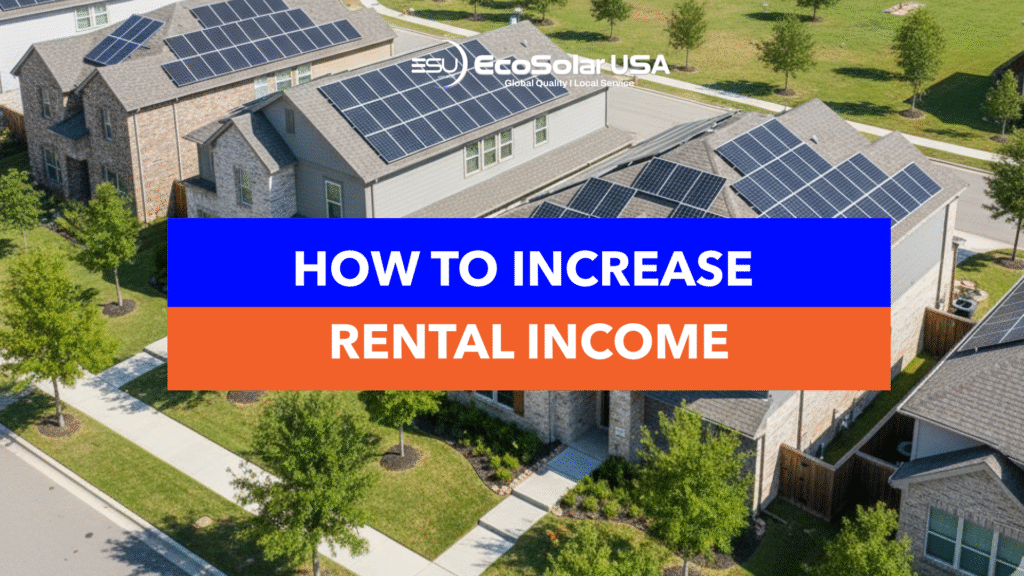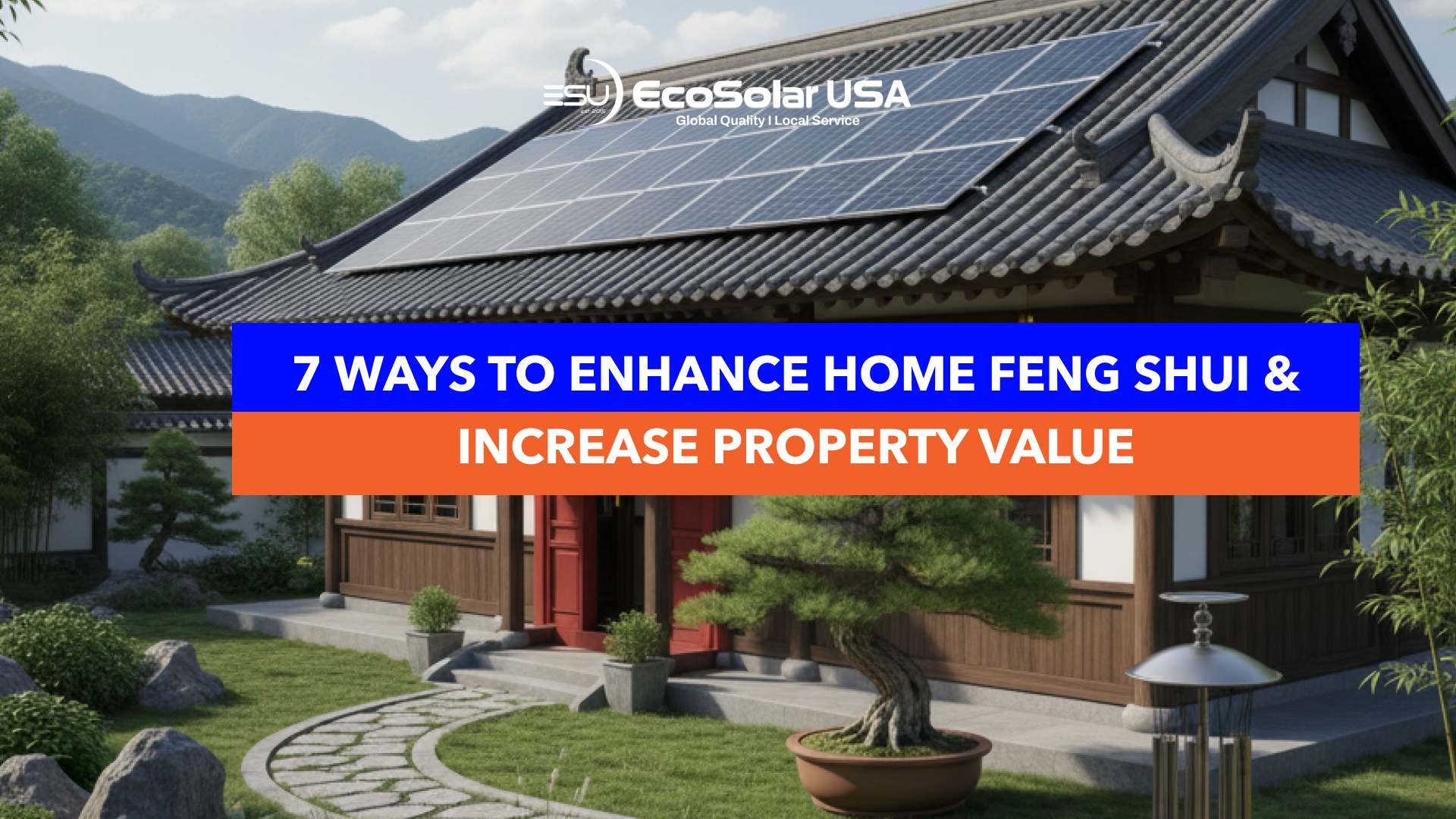
Introduction
For rental property owners, boosting income isn’t just about raising rent — it’s about increasing the value and appeal of your property. Two effective ways to do this in 2025 are:
- Incorporating energy-efficient upgrades like solar panels, which can reduce utility costs and make your property more attractive to tenants.
- Planning Accessory Dwelling Units (ADUs) carefully, which can add extra rental income when done right.
Poor planning — especially for ADUs — can cost thousands, while thoughtful design and energy-efficient upgrades can increase rental income and tenant satisfaction.
1. Understand the Rental Market
a. Rent Growth Trends
- In the U.S., median rent reached $1,370/month in early 2025, up from $1,320 in 2024 (Apartment List).
- 85% of landlords raised rents in 2024, and about a third increased by 6–10% to cover rising costs (Baselane).
b. Tenant Preferences
- 67% of renters would pay higher rent for homes with energy-efficient features, including solar (NRDC).
- Homes with solar panels can see a higher resale value of 4–5%, which also translates to potential rent increases (Lawrence Berkeley National Lab).
2. Strategies to Increase Rental Income
a. Upgrade Your Property Smartly
- Adding solar panels or other energy-saving upgrades can reduce tenants’ electricity costs by 20–40% depending on usage (EnergySage).
- Pair energy-efficient upgrades with modern appliances, lighting, and smart thermostats to make your property more appealing.
b. Raise Rents Strategically
- Highlight potential savings on electricity bills — tenants are often willing to pay slightly higher rent for lower overall costs.
- Example: If average electricity savings are $100/month, a reasonable rent increase is $50–$70/month.
c. Reduce Vacancy and Attract Tenants
- Eco-friendly homes attract longer-term tenants. Tenants in energy-efficient or solar-equipped homes stay on average 15% longer (NRDC).
- Listing your property as “energy-efficient” can increase visibility and competitiveness on rental platforms.
d. Offer Add-On Services
- If your property produces excess energy (via solar), part of the savings can be passed to tenants, increasing perceived value.
- Combine energy-efficient upgrades with other amenities, like EV charging stations, rooftop spaces, or smart appliances, to attract premium tenants.
3. Smart ADU Planning
Talk Show Insight: Poor ADU planning can cost over $2,000 in wasted fees, rework, or missed savings.
Best Practices:
- Plan ADUs early with an architect to ensure proper layout, sunlight orientation (helpful for energy efficiency), and efficient utilities.
- Early planning can save $1,500–$3,000 per ADU compared to retrofitting later (ADU Advisors).
- Well-planned ADUs, combined with energy-efficient upgrades, can reduce tenant electricity bills by $360–$720/year and maximize rental income.
Learn more from this case study on why poor ADU planning can cost thousands — and how early planning saves money.
4. Rental Comparison: Before and After Energy Upgrades + ADU
| Feature / Metric | Before | After (Energy Upgrades + ADU) | Notes / Source |
| Monthly Rent | $1,370 | $1,500 – $1,600 | Rent increase from ADU and energy-efficient upgrades |
| Tenant Electricity Cost | $150 | $90–$120 | 20–40% reduction from energy-saving upgrades (EnergySage) |
| Vacancy Rate | 6.8% | 5.5% | Eco-friendly features increase tenant retention (NRDC) |
| Annual Rent Income (1 unit + ADU) | $16,440 | $18,000 – $19,200 | Includes ADU rental + energy-saving boost |
| Annual Savings for Tenant | N/A | $360 – $720 | Lower utility bills |
| Property Value Impact | Baseline | +4–5% | Energy-efficient upgrades + ADU increase property value (Lawrence Berkeley Lab) |
| Planning / Retrofitting Cost | N/A | -$2,000+ | Savings from early architect coordination |
Key Takeaways:
- Energy-efficient upgrades and ADUs can justify $50–$100/month rent increases.
- Reduced vacancy and longer tenant retention increase annual income.
- Early planning avoids costly mistakes and wasted fees.
5. Risk Management & Tips
- Communicate benefits: Explain lower tenant bills and overall cost savings.
- Check local regulations: Incentives, rebates, and rules for rent and energy upgrades.
- Maintenance planning: Energy-efficient features require minimal upkeep, but continuity is important.
- ADU coordination: Involve an architect early to avoid expensive retrofits.
6. Conclusion
Investing in energy-efficient upgrades and planning your ADU strategically is a smart, long-term way to increase rental income.
- Early ADU planning saves thousands in unnecessary costs.
- Energy-efficient upgrades reduce tenant bills and justify higher rent.
- Proper planning increases property value and tenant satisfaction.
Watch our talk-show snippet to see how poor ADU planning can cost over $2,000 — and how early planning with energy efficiency in mind saves money.
With rising utility prices and tenants valuing sustainability, now is the perfect time to plan your ADU and incorporate energy-efficient upgrades to boost rental income.
Sources:



